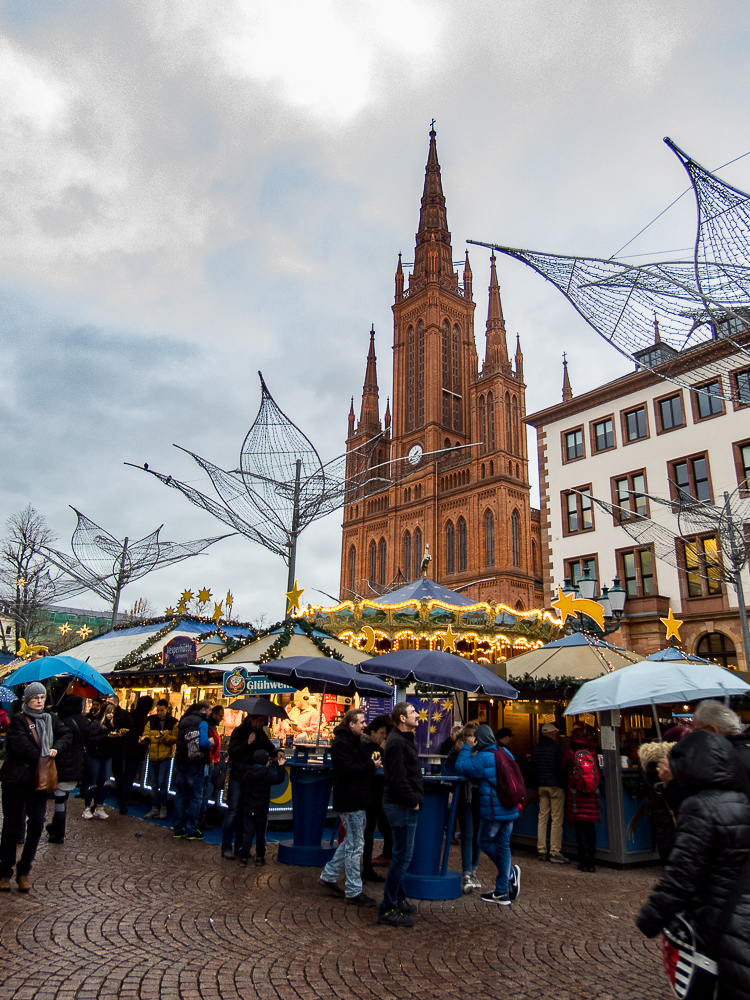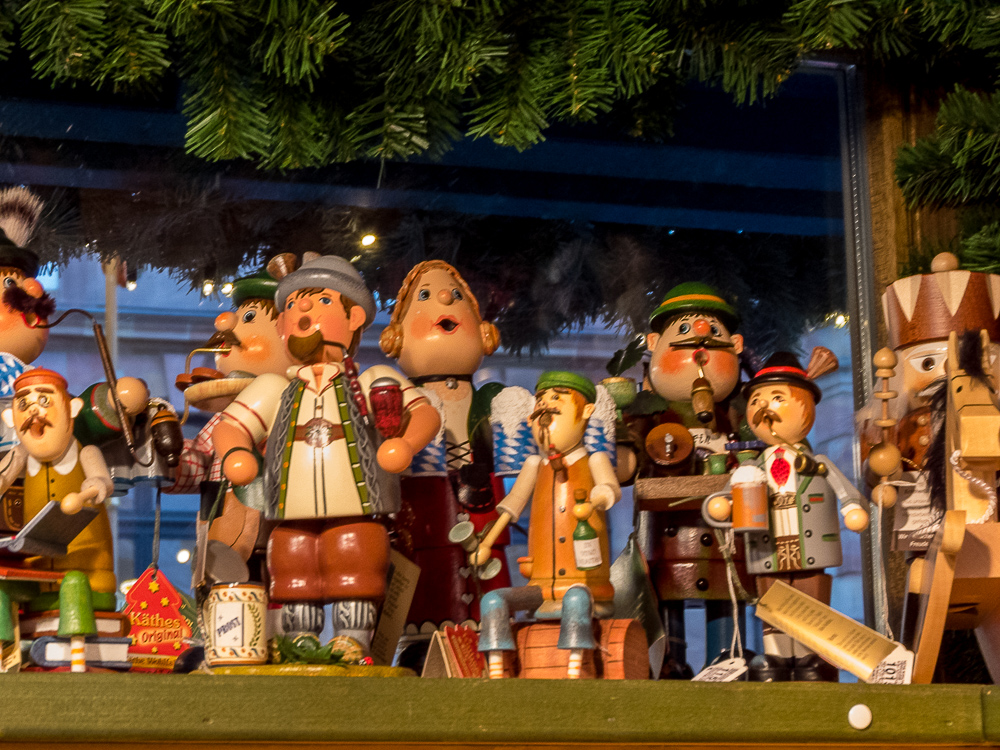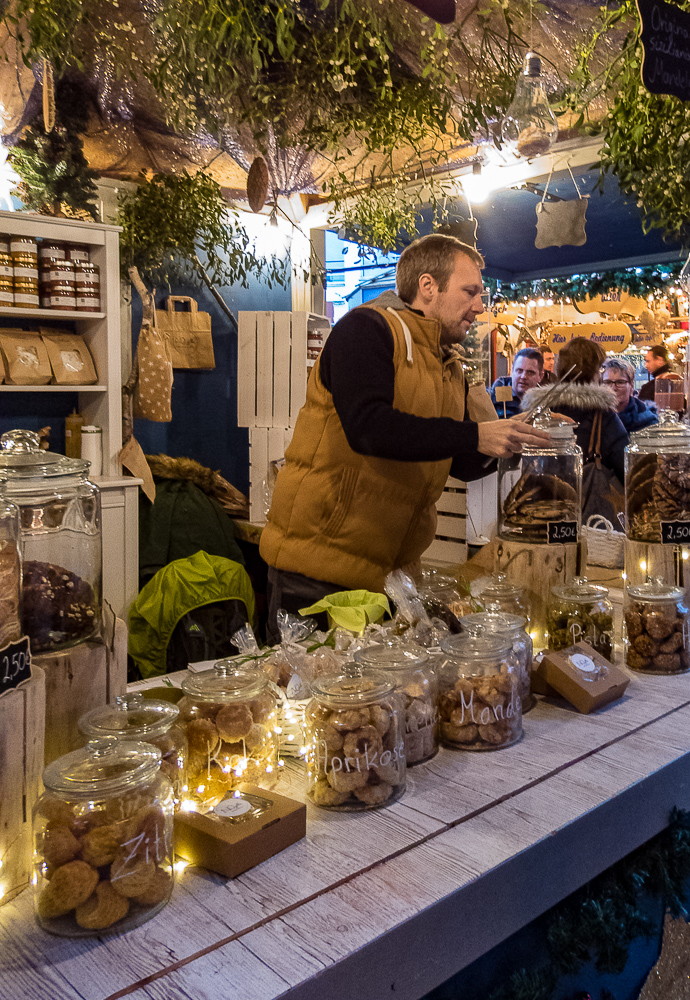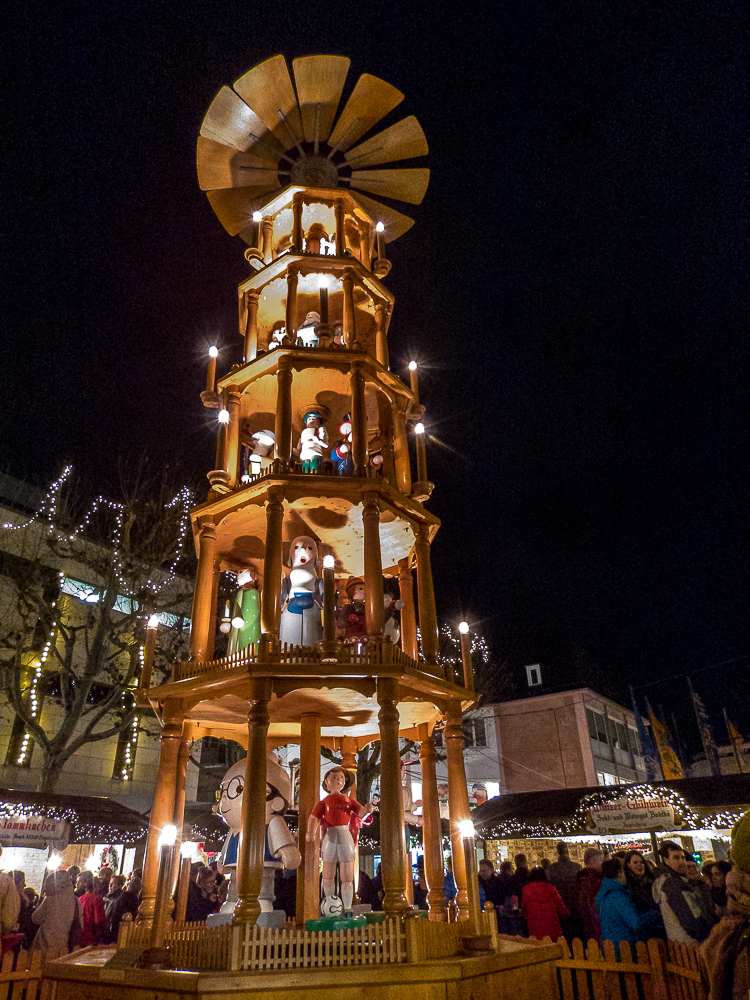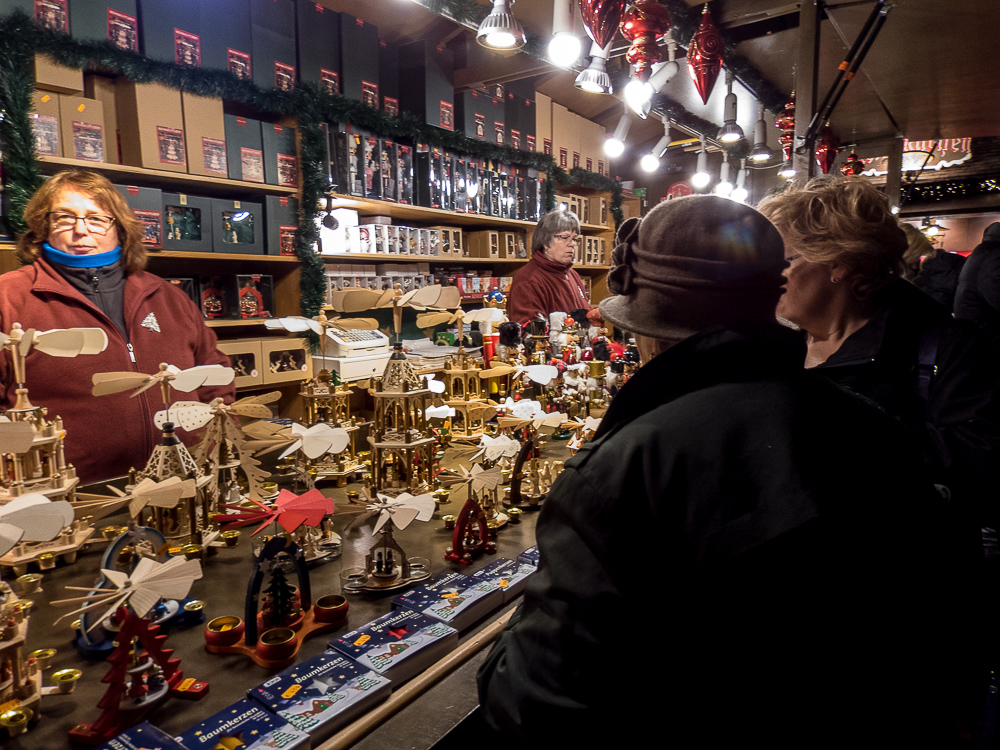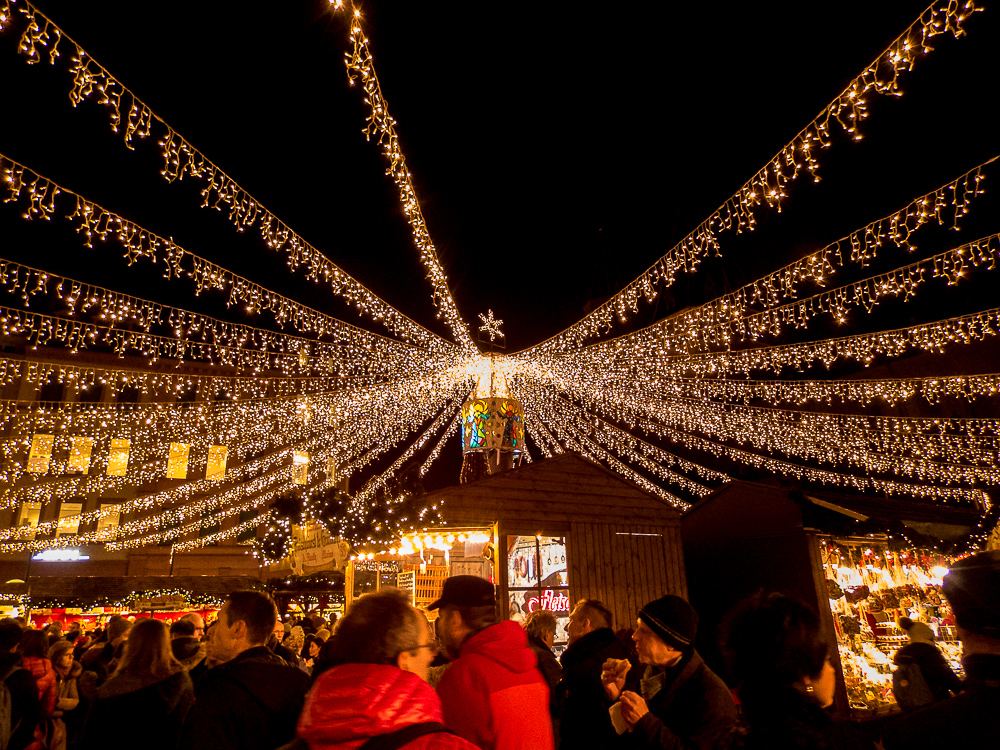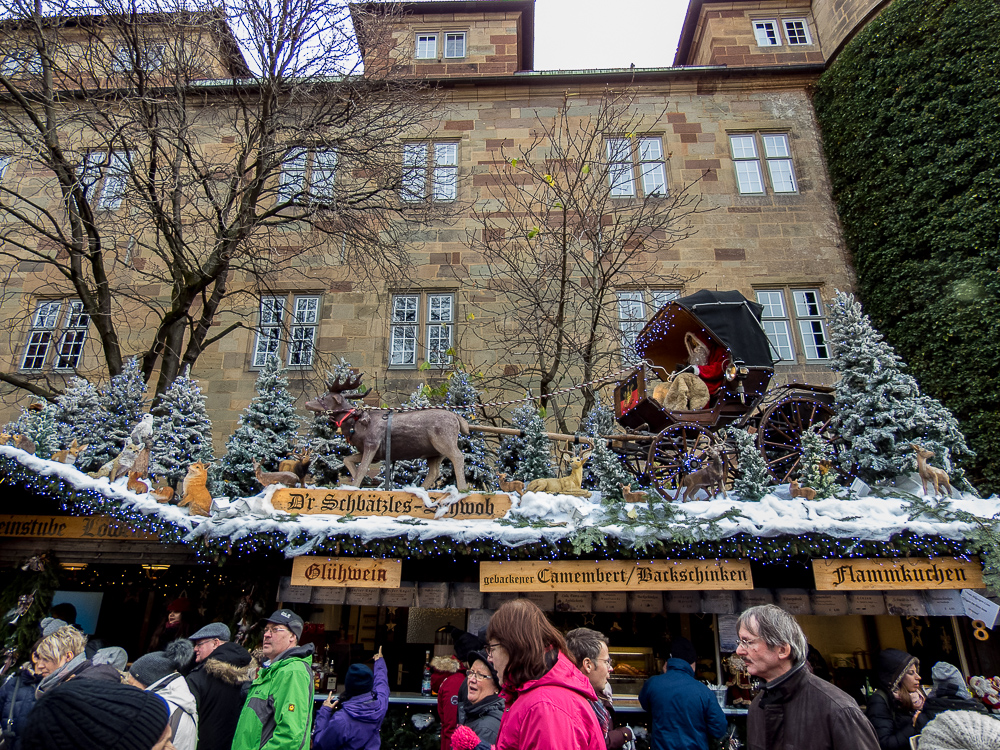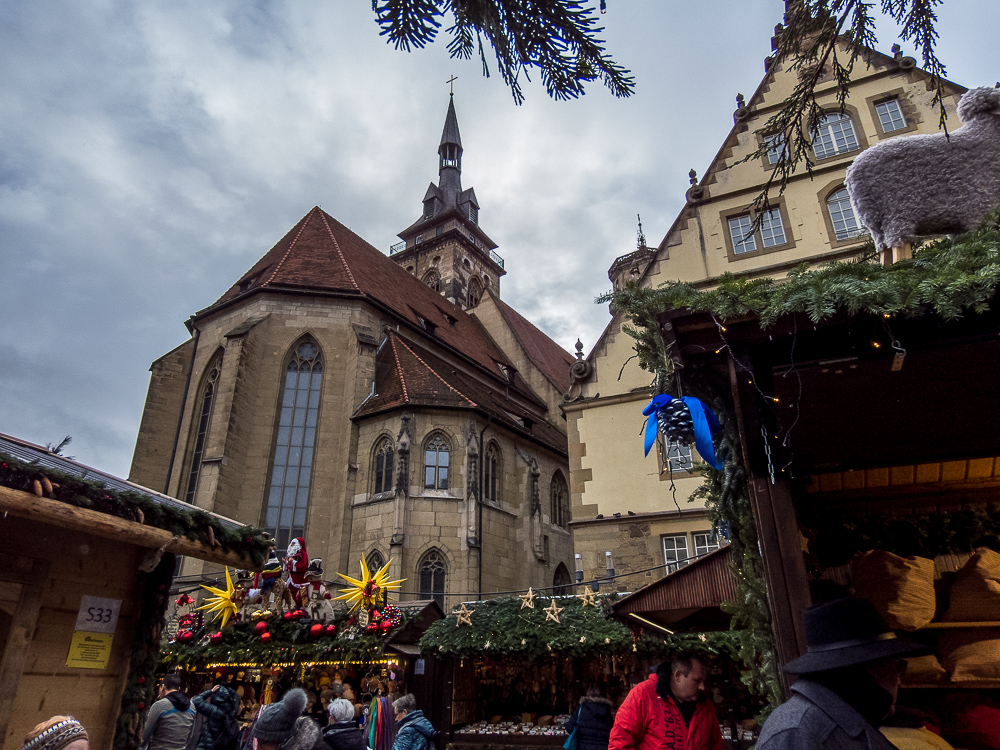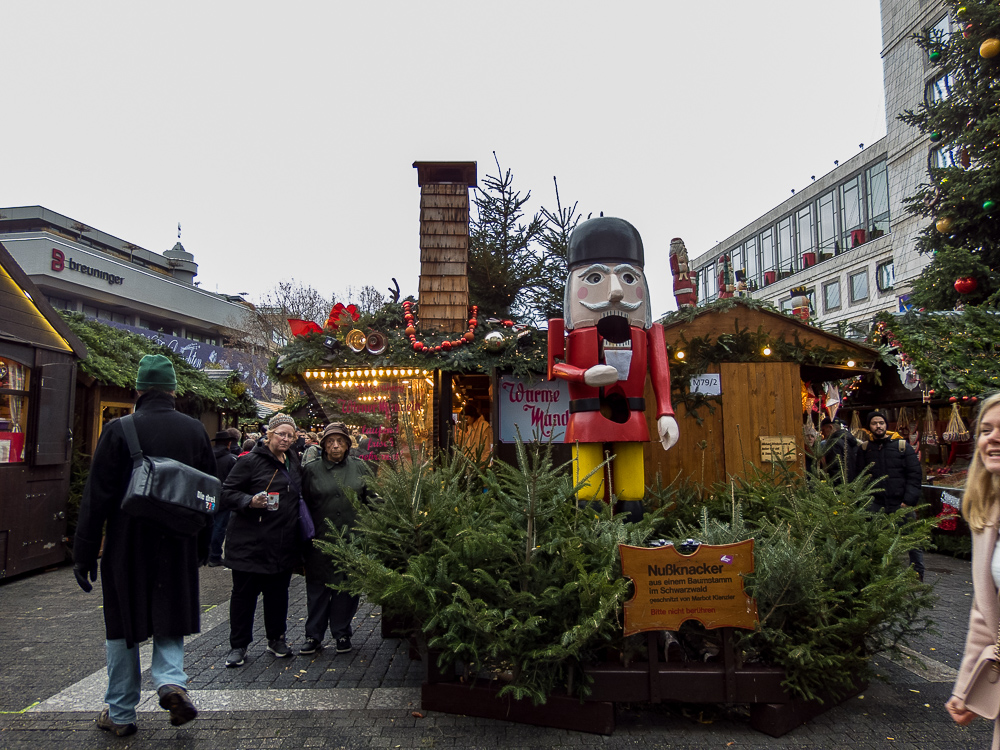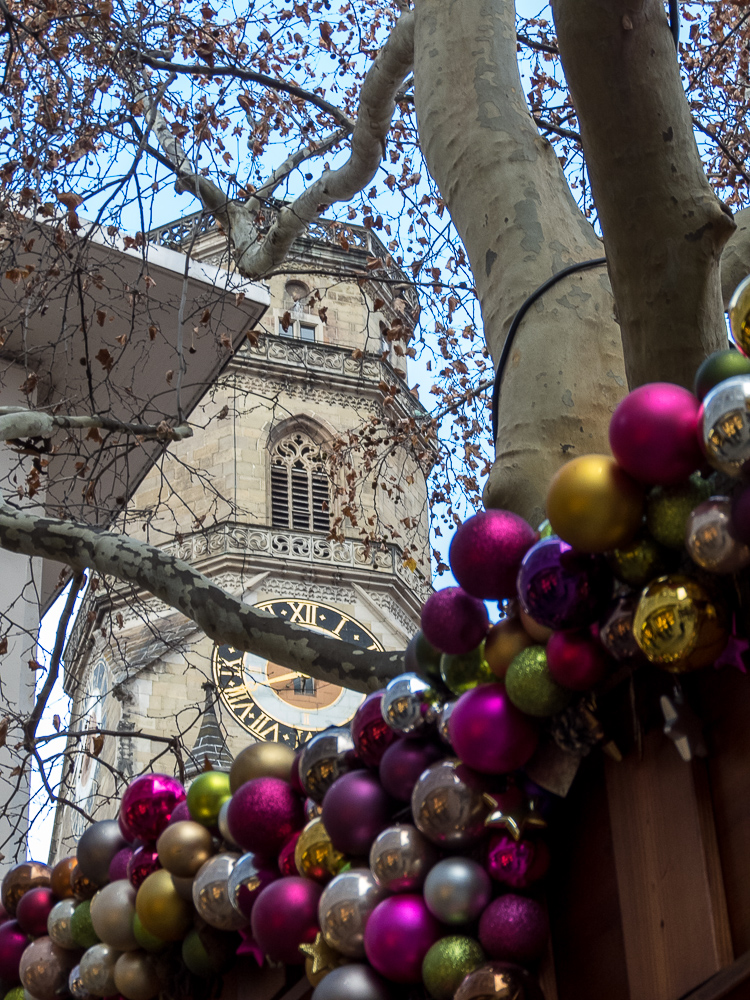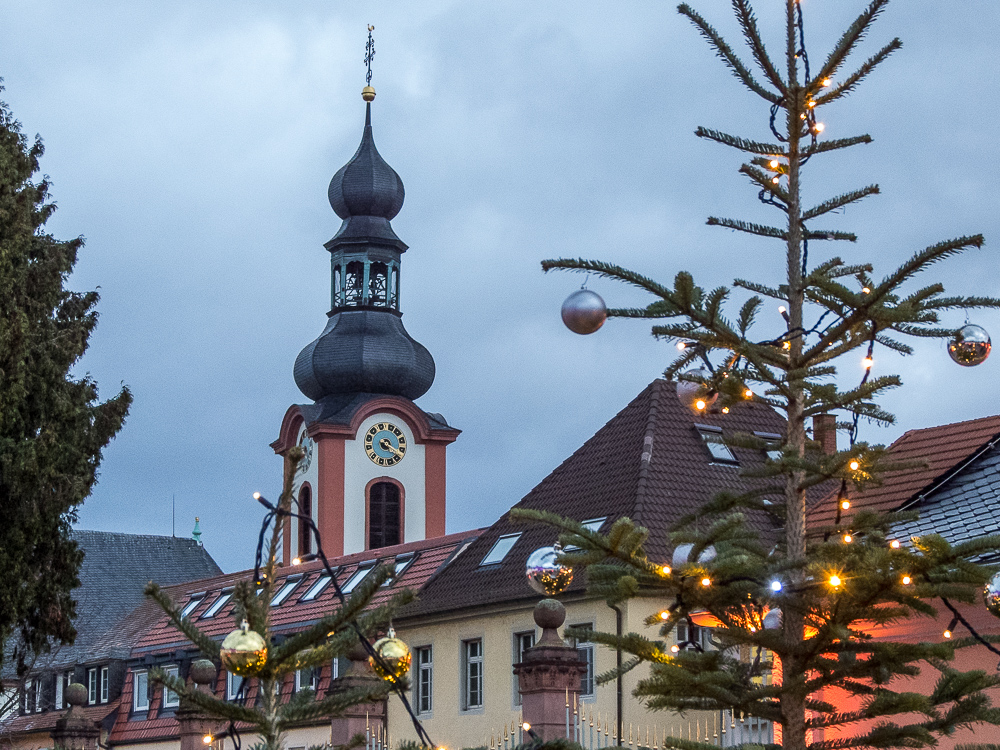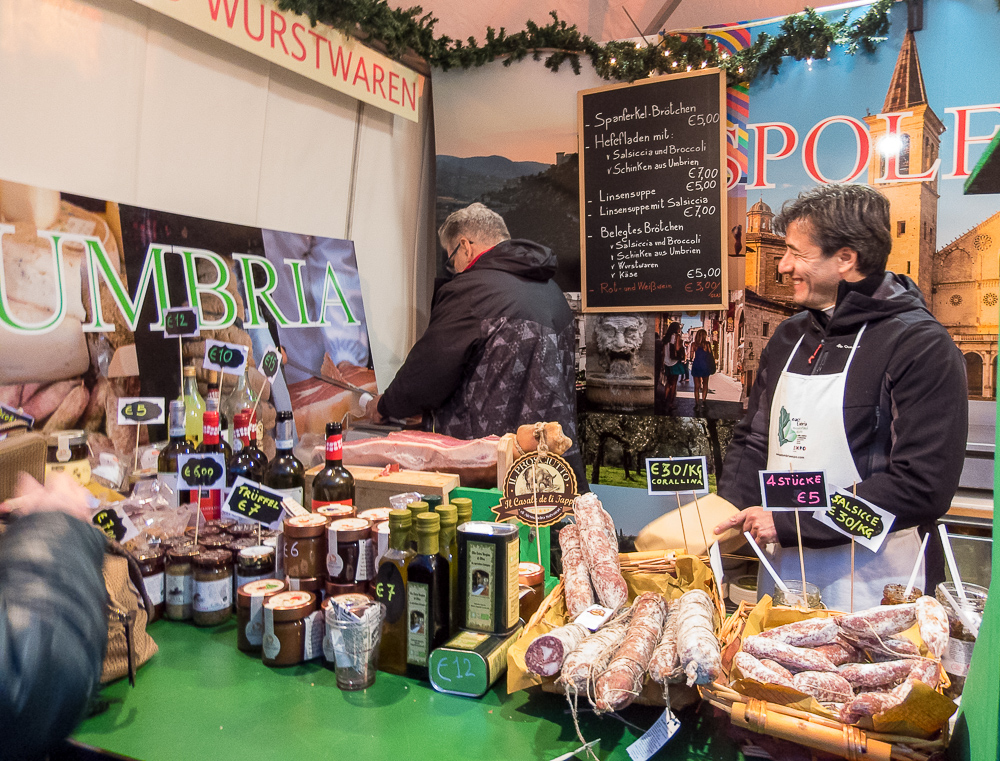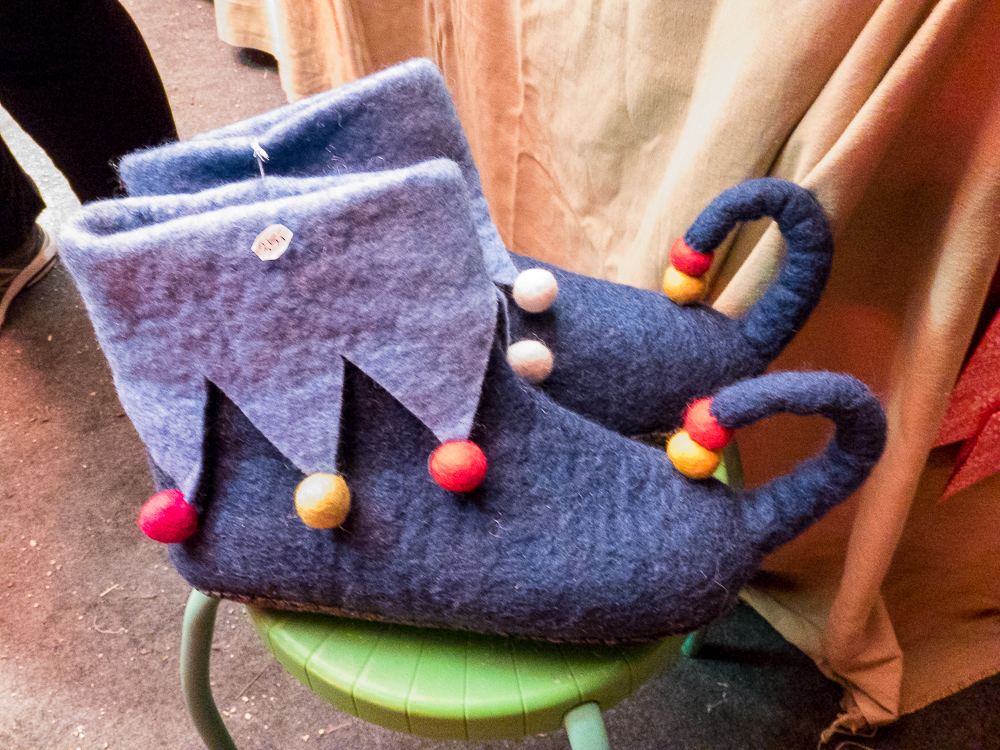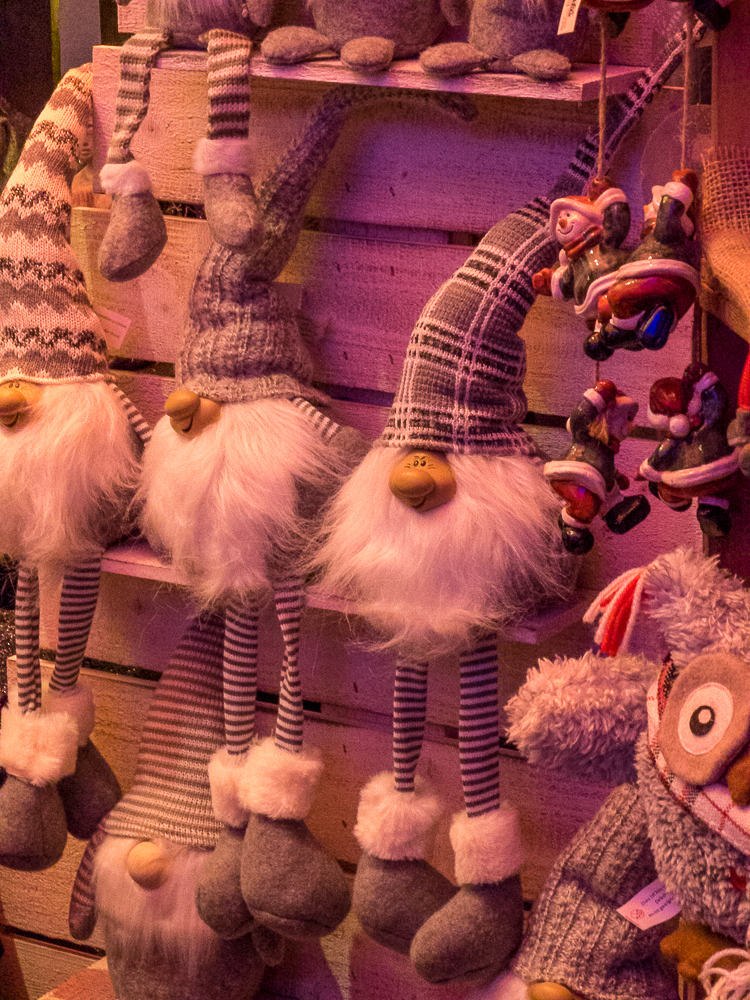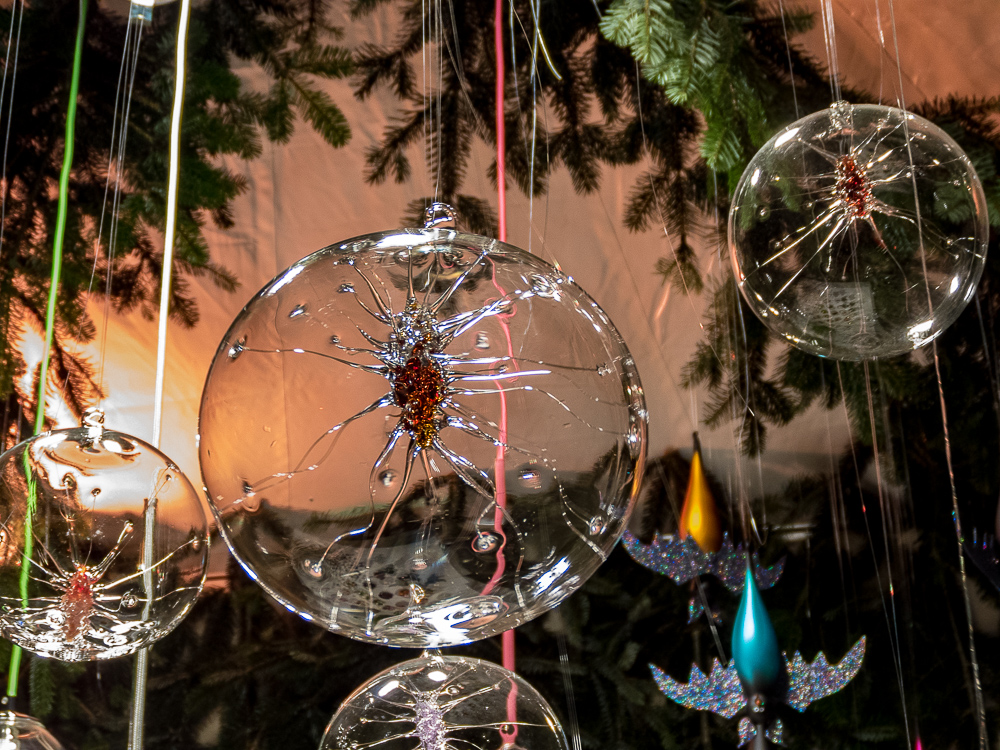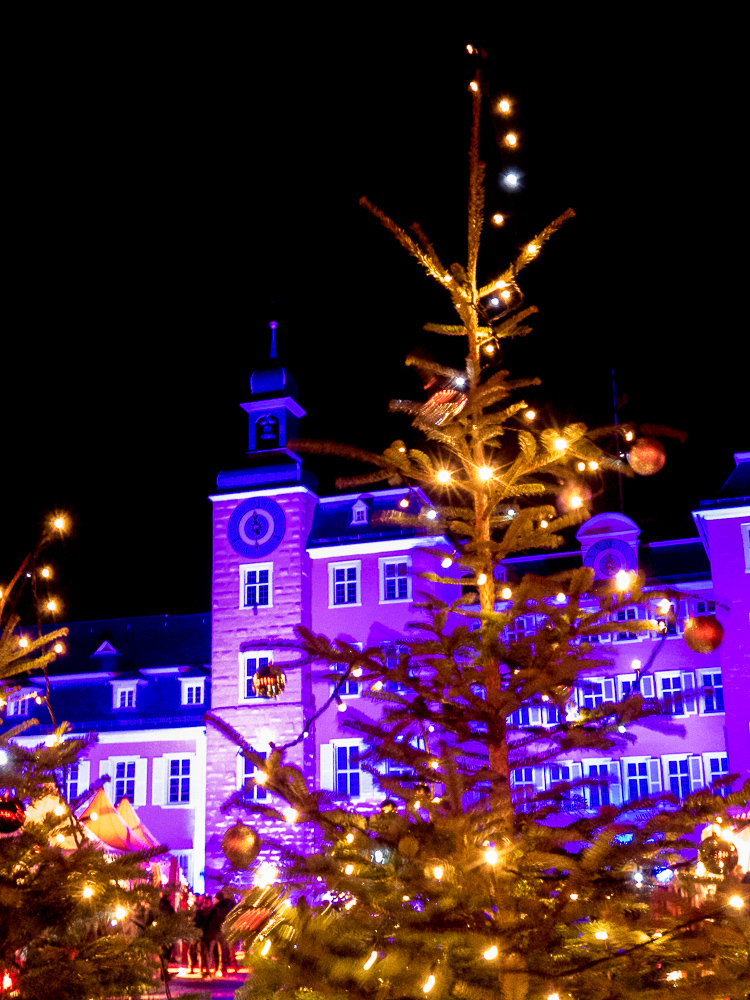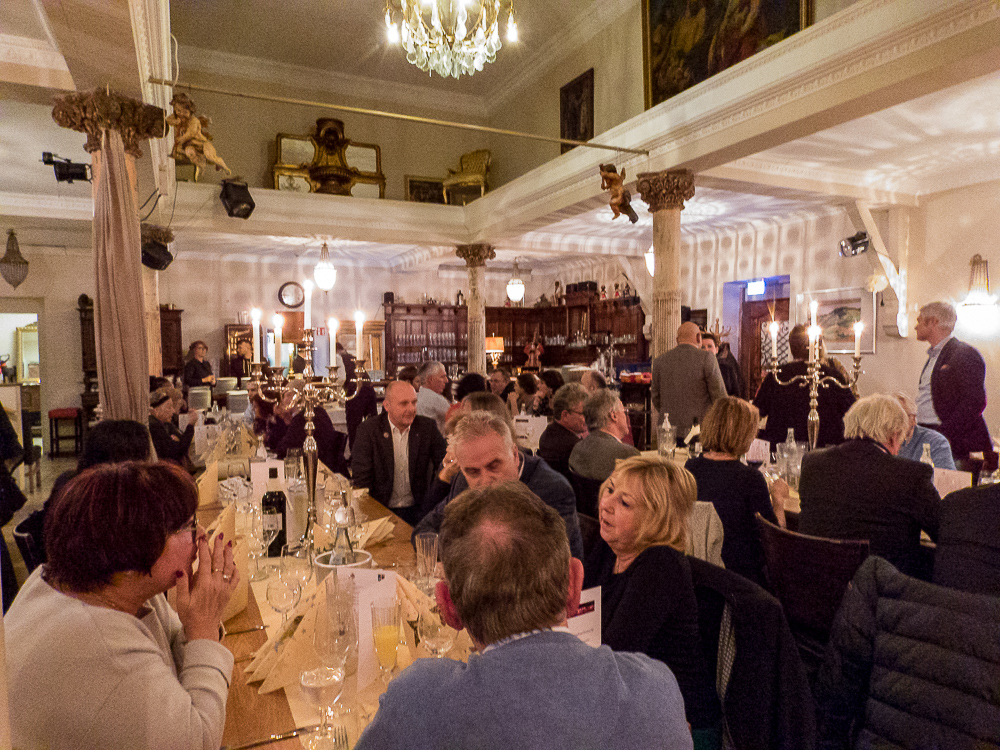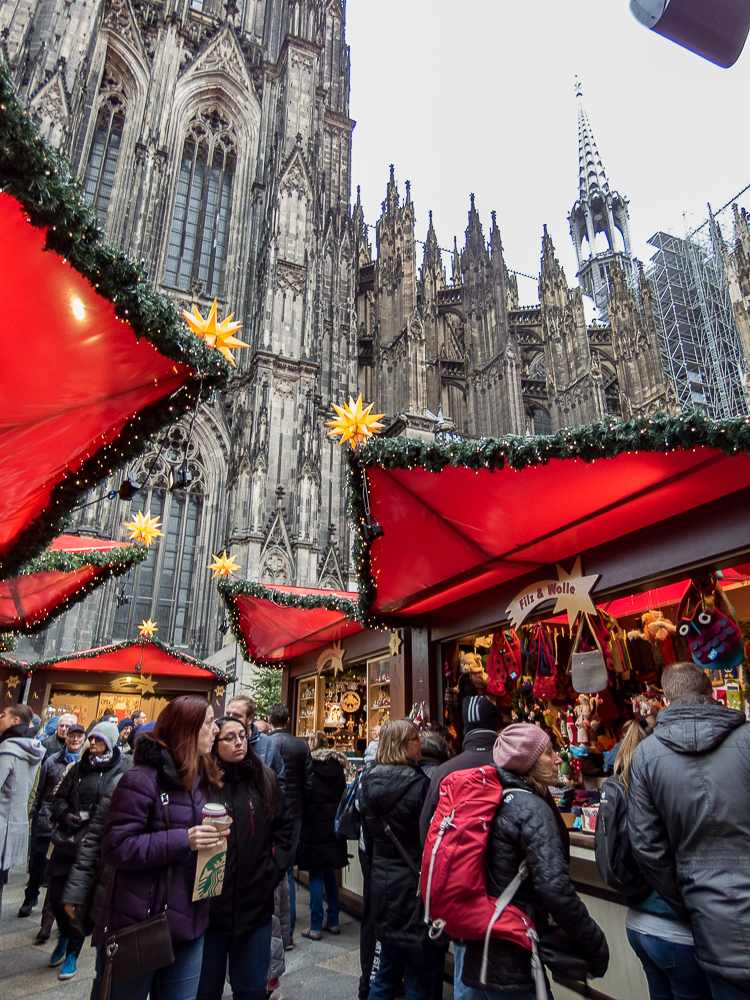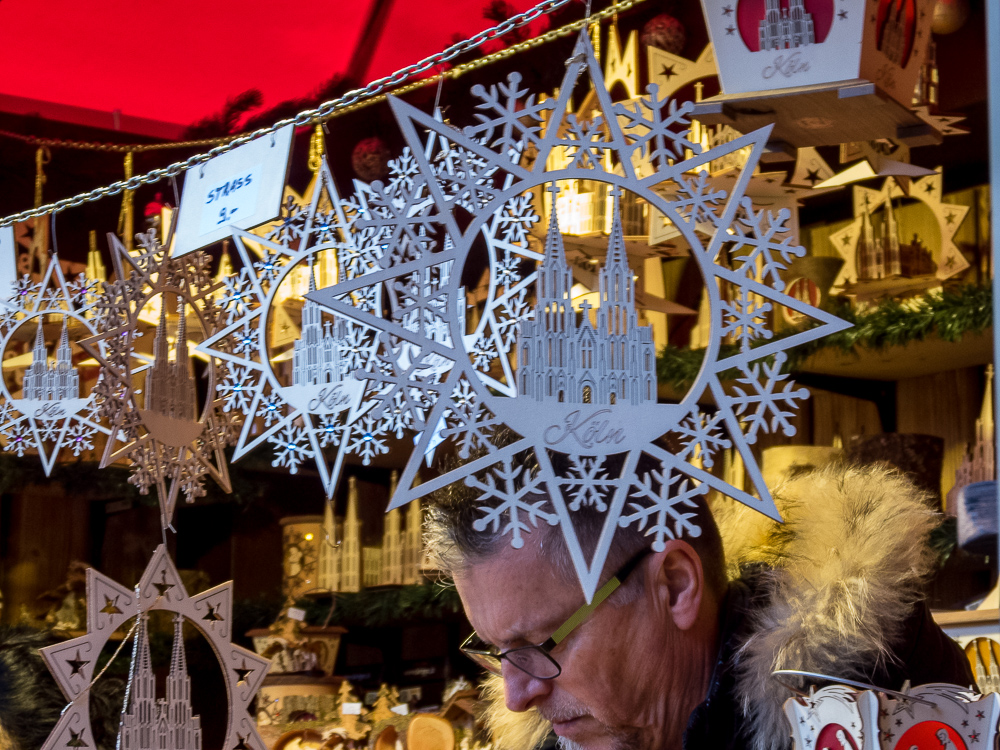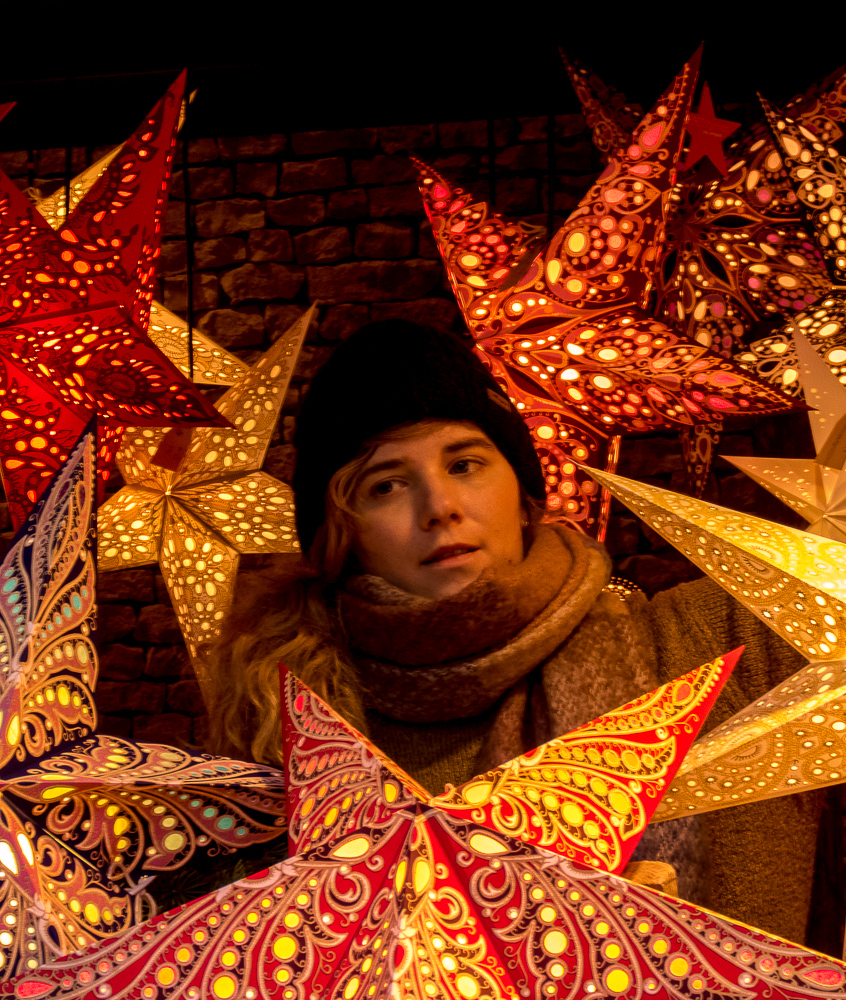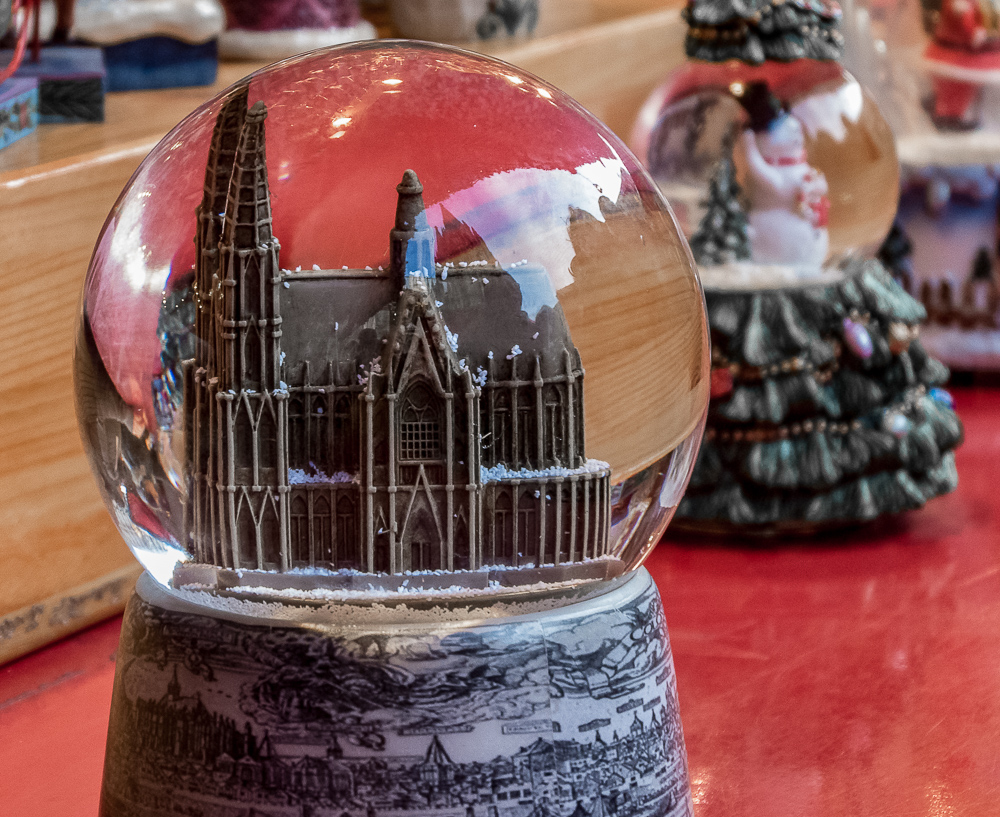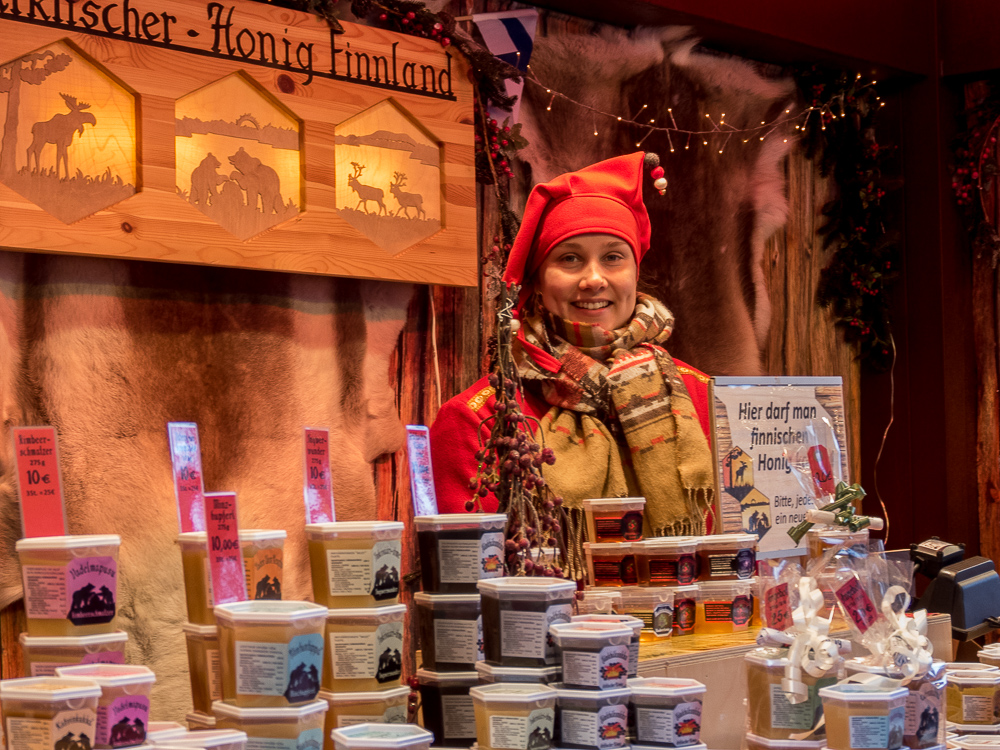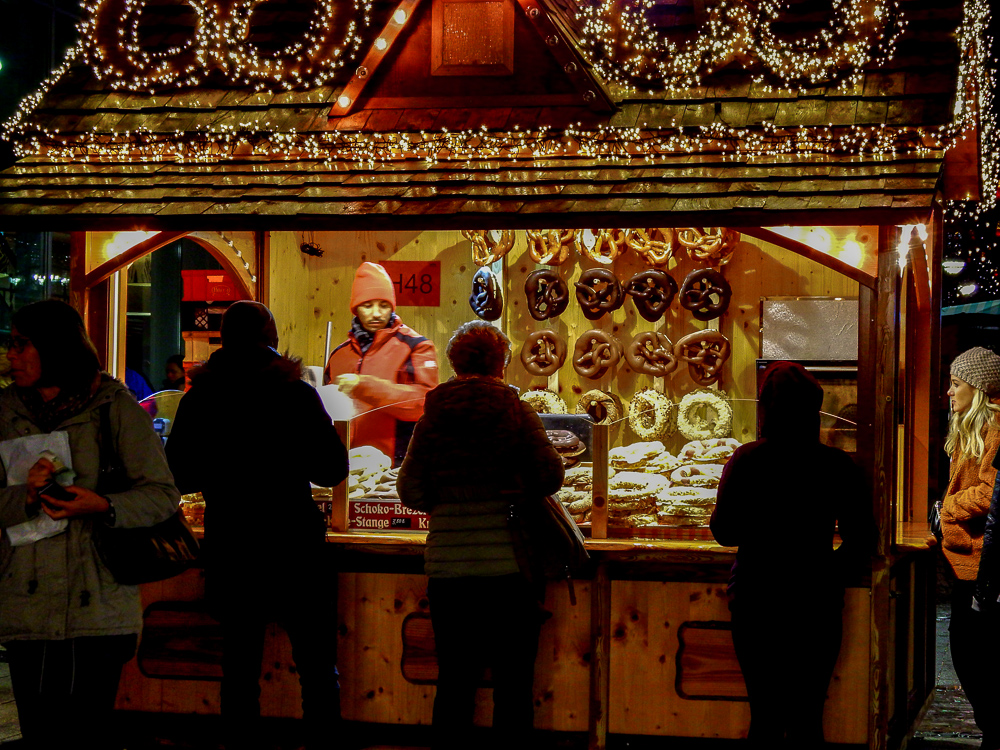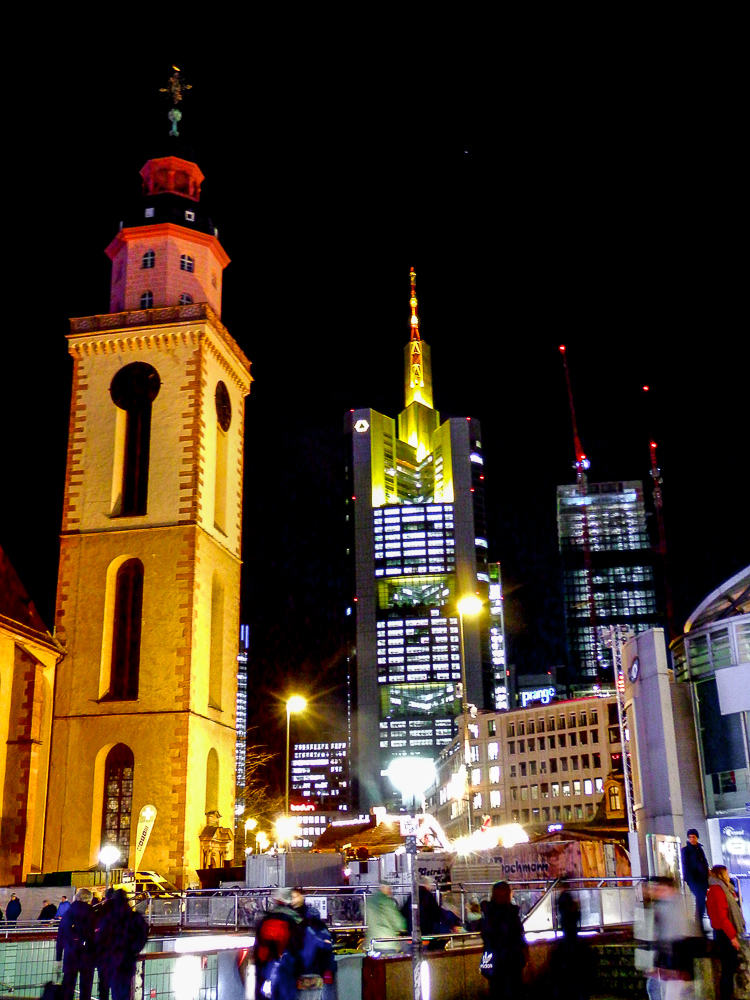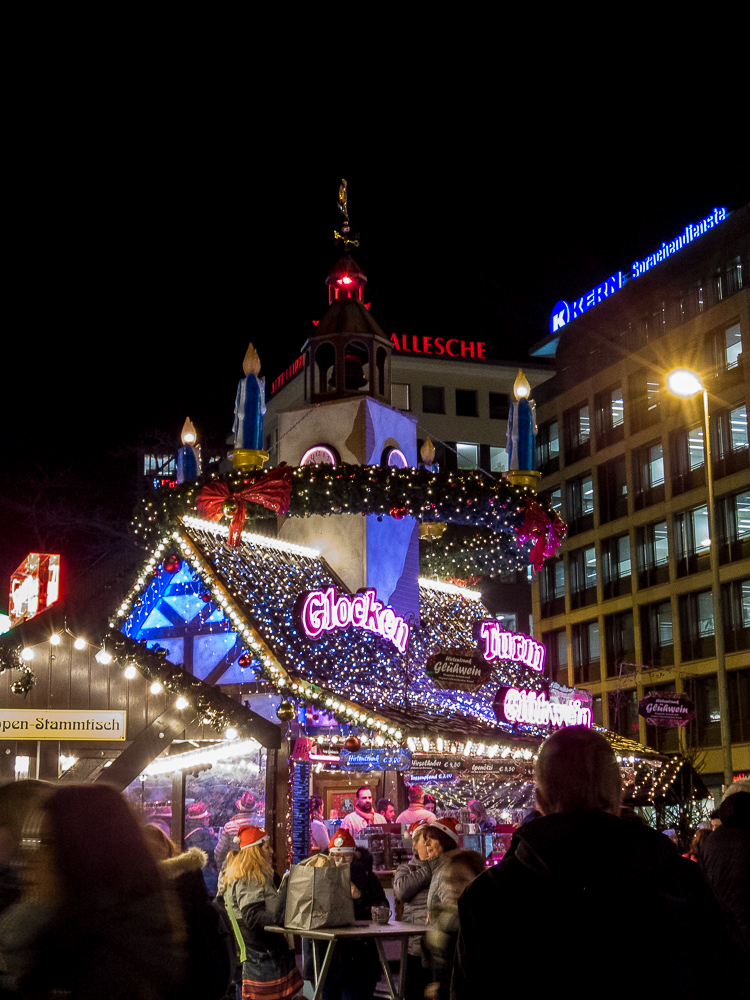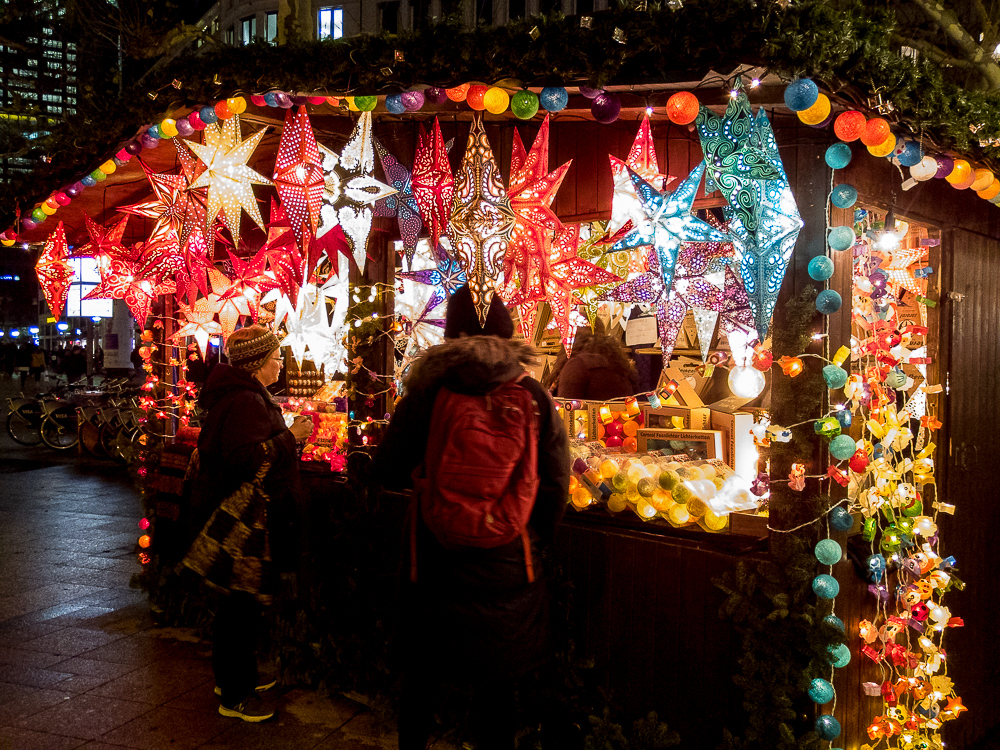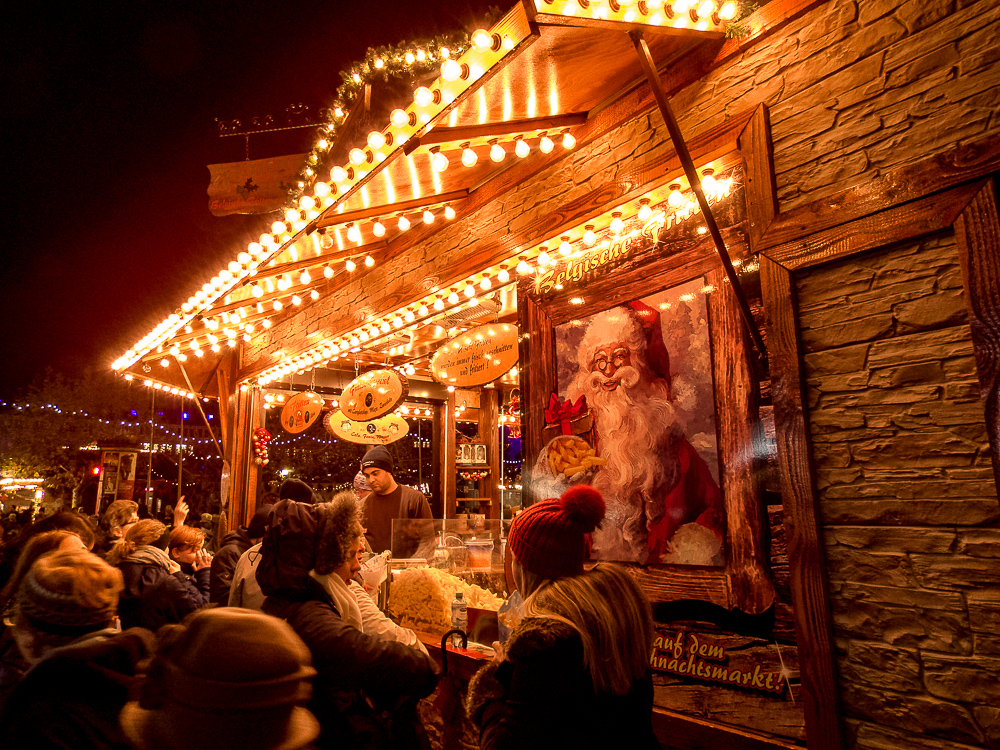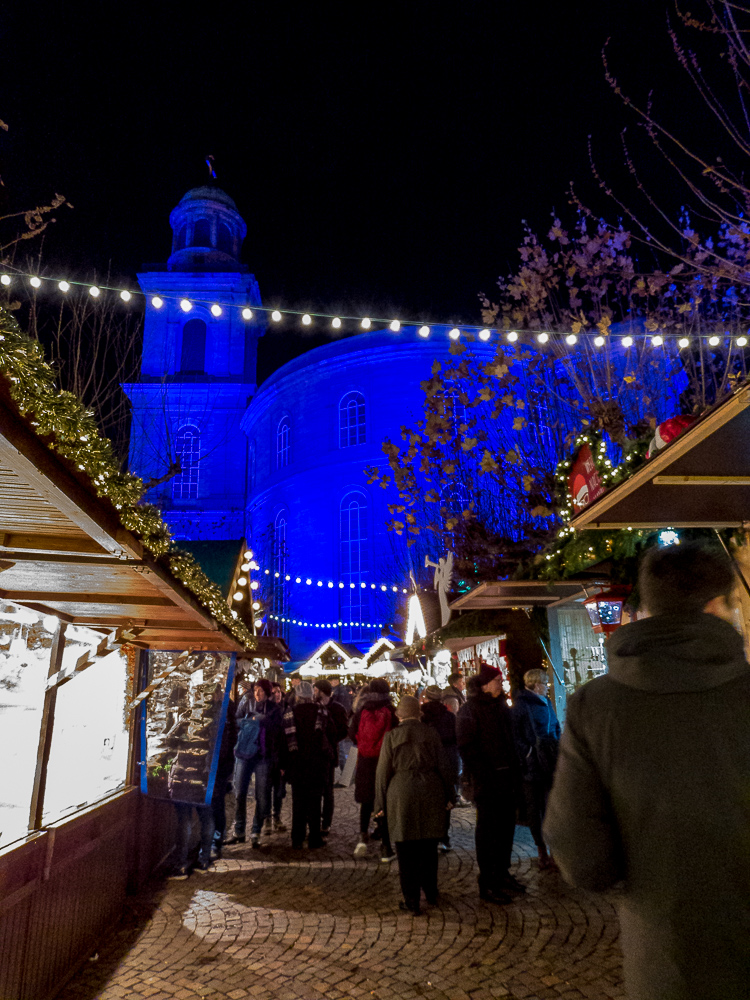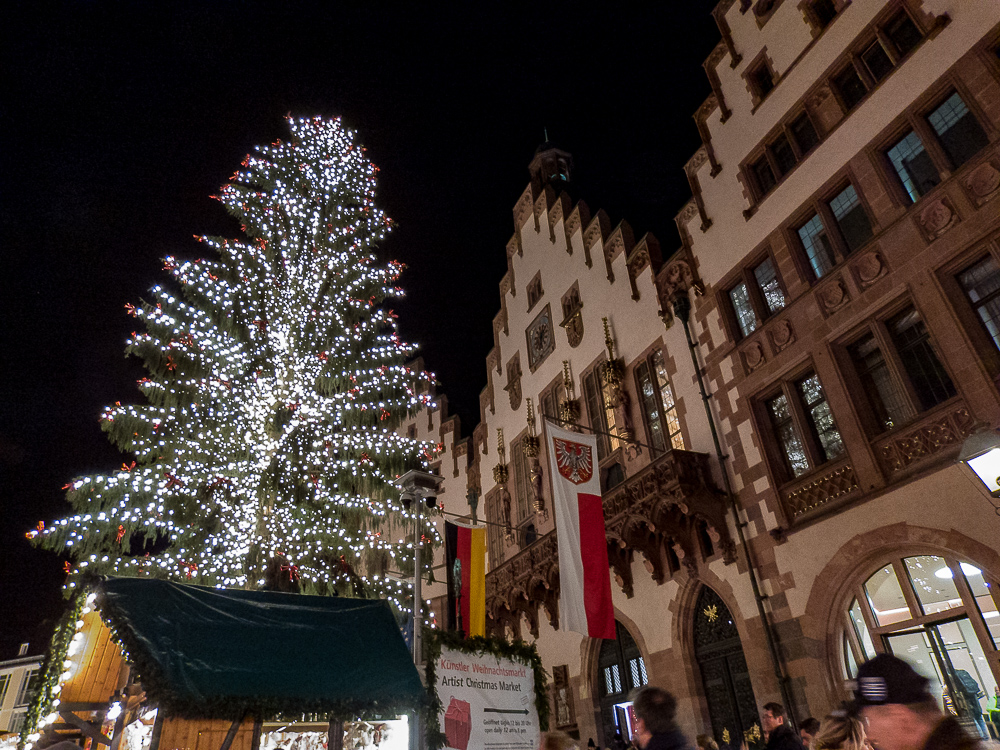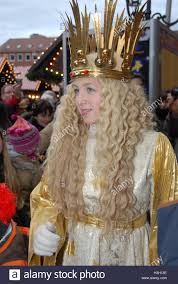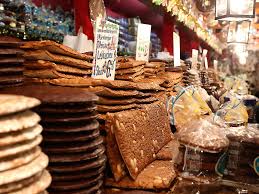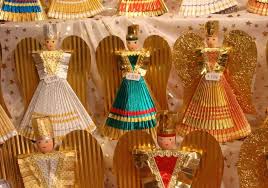Guide to the Christmas Markets of Central Germany
Now, you COULD be absolutely crazy like I was last December, and squeeze in six or seven Christmas markets in a long weekend. It is totally possible to drive from City to City and spend lunch in one, dinner in another. A week would be perfect but, alas, I didn’t have a week.
The tradition of a Christmas market dates back to the middle ages as a celebration of the advent season in the Christian calendar. Most markets have both nativity scenes as well as more secular trees and lighting demonstrations. In southern Germany, they are generally referred to as Christkindlemarkets (Christ child) but in northern areas more known as Weihnachtsmarkets (Christmas).
What is the same for all of them? The warmth of the holidays, lots of people having fun, craft market and food market areas. For sure it’s THE place to gather with friends after work so evenings and weekends are predictably crowded. Most are held in the town or city center squares.
What makes them different? Architecture, design and local specialty foods. (Check out our next blog for more about the eats and drinks.)
Here’s my rundown of the markets I attended as a sampling of what you might see.
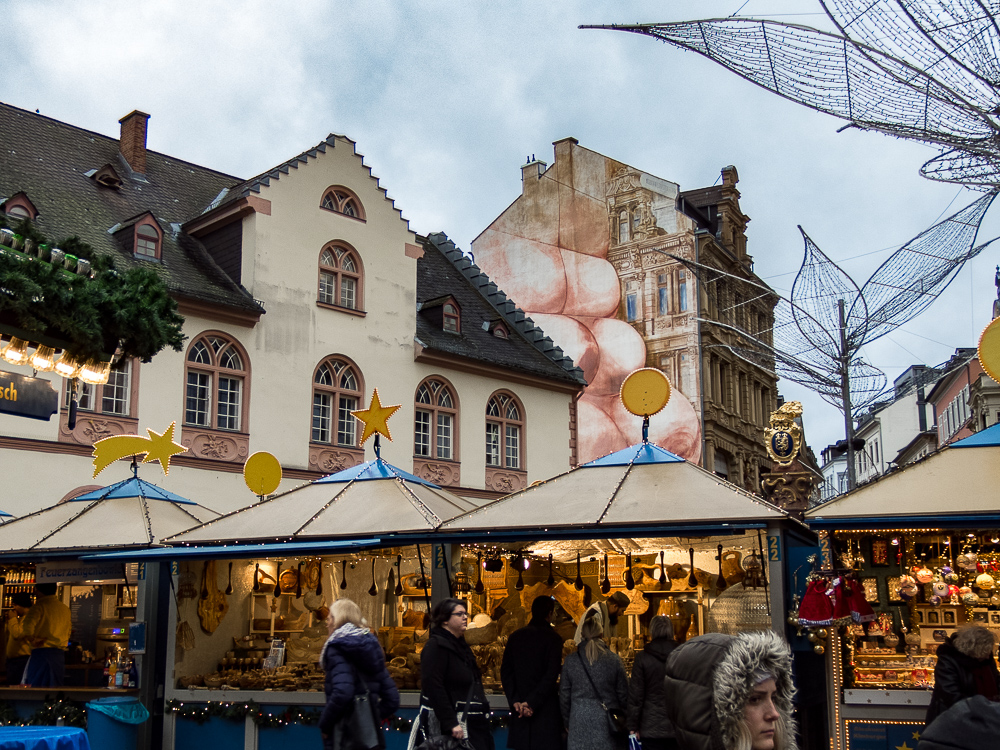
Wiesbaden – stretched in the main church square and all the way around the block, this lovely market is decorated with all white lights and offers a great selection of candied almonds and pecans as a favorite staple. For some reason, we saw more decorative candles here than any other location. We confess to doing more shopping at this market than any other during our mid-afternoon visit and squeezed in a walk through the exquisite Kurhaus nearby. (The site of ancient Roman baths and now a high-quality casino and event venue with adjacent park.)
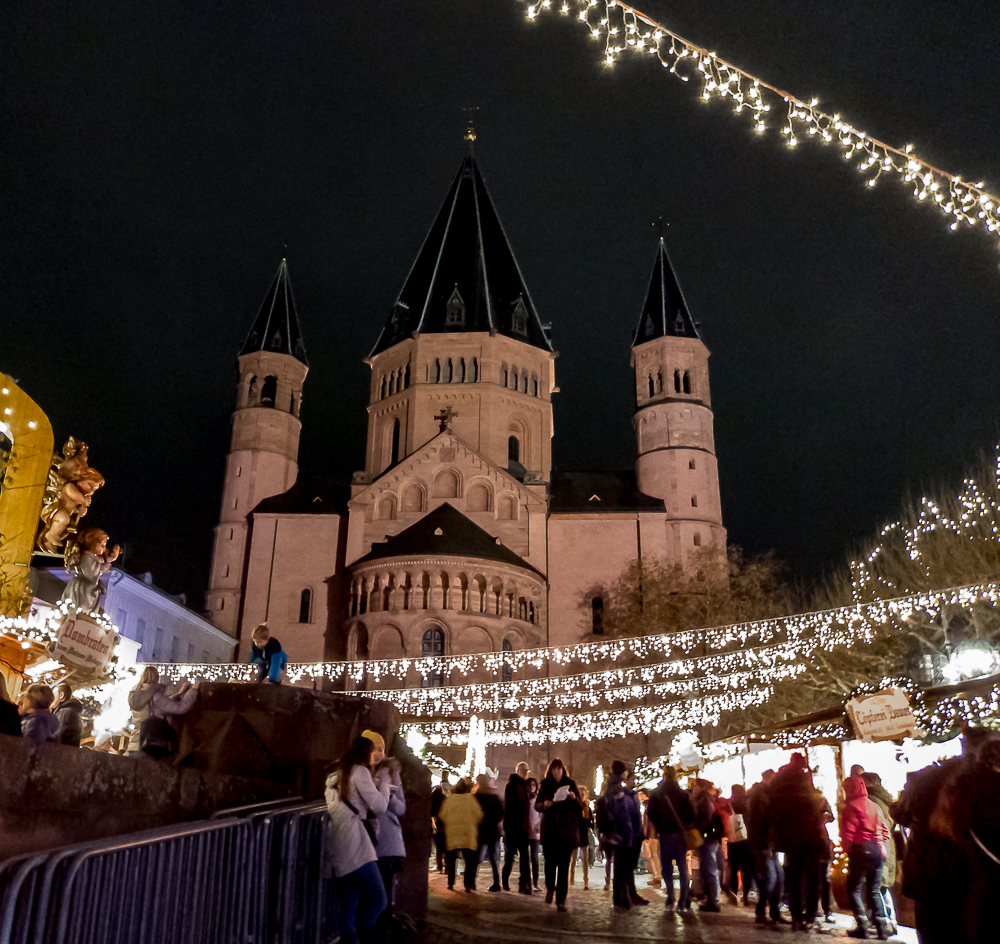
Mainz – the claim to fame for the Mainz market is the 40-foot working wooden pyramid with cascading strands of light in one square. But, to be honest, the cathedral and architecture stole the show for our early evening visit on a Friday night. Be aware of massive influx of after work crowds on a Friday evening. But the music, camaraderie and joy was palpable.
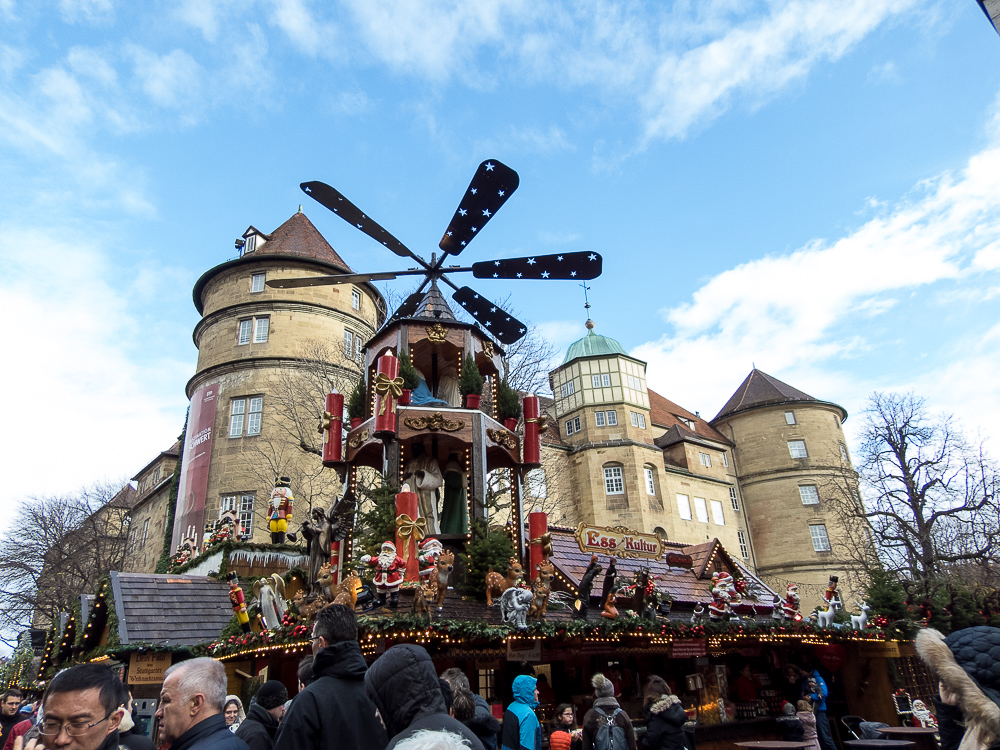
Stuttgart – it took us a while to find parking but once at the market it was magical. Stuttgart’s market is spread out over multiple large squares with crafts in one and food in another, etc. Being there midday on a Saturday was likely a smart move as it could definitely get tightly packed as evening approaches. The food was fabulous but the scene stealer was the highly decorated and elaborate tableus created on TOP of the market stalls. With the historic architecture surrounding the square it was all about looking up in Stuttgart.
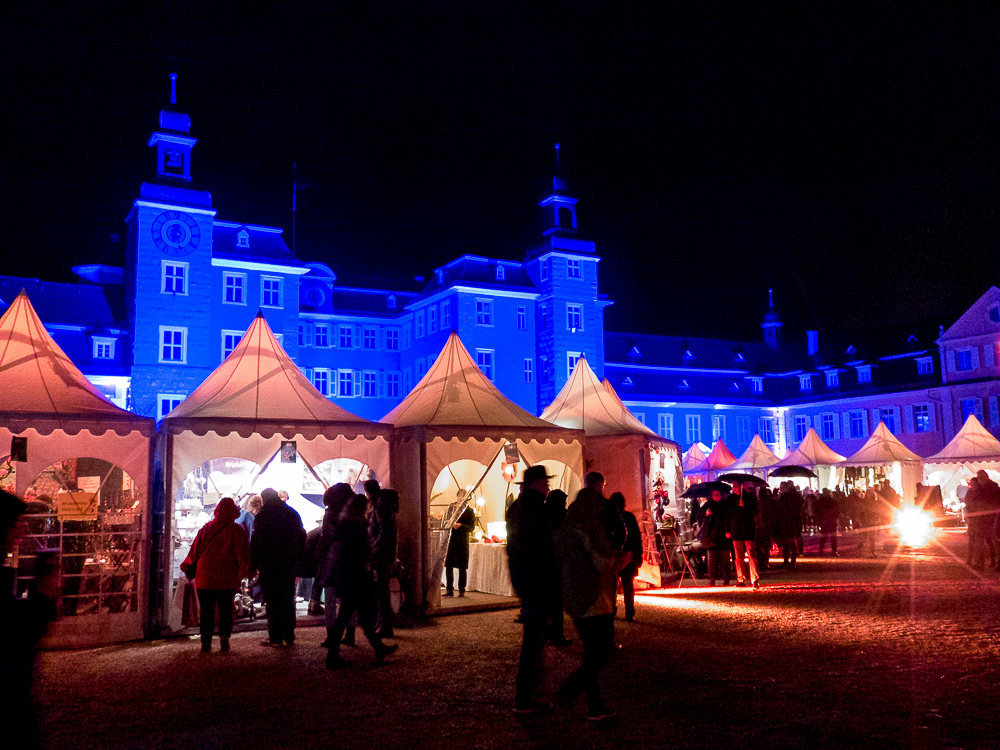
Schwetzingen – the lovely castle setting allowed for colorful light displays in both the food and the craft market areas. This small town packed a punch for warmth and charm including a celebration of their sister city partners from around the world. We joined a large group at a gasthaus for a full dinner following the entertainment festivities. And, we’ll admit to spending a fair amount at the gorgeous market stalls set in the castle courtyard with unique textiles and savory local specialties. I still curl up with my large handmade shawl and barely managed to get the cheeses and chocolates home to share a few days later.
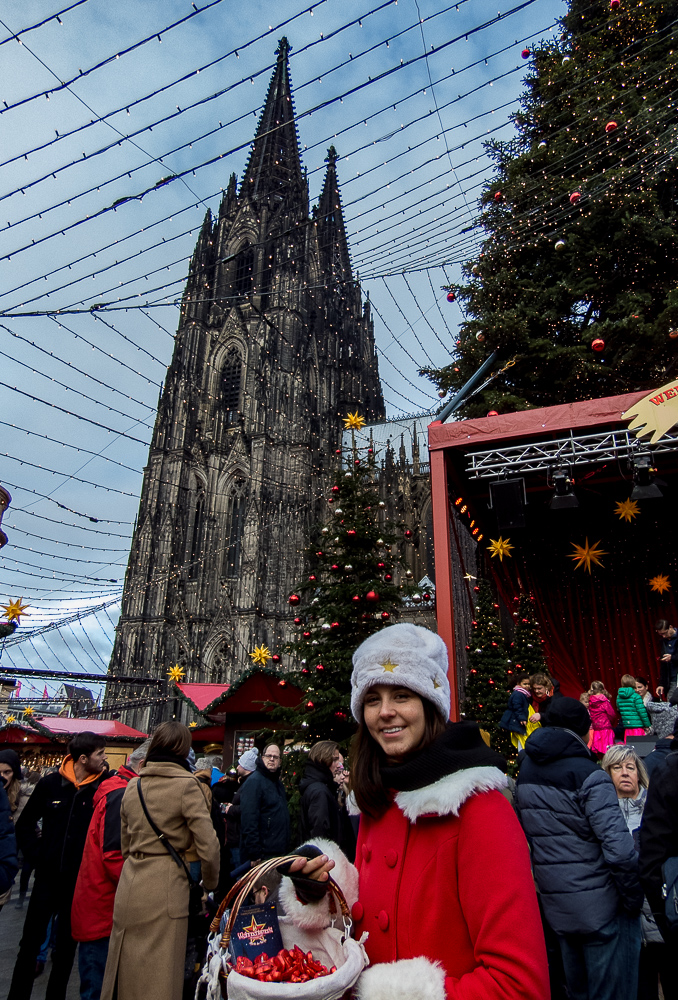
Koln – the magnificent Koln Cathedral dominates both the skyline and the Christmas market. Nestled in under the flying buttresses, the market appears small but can easily take a few hours to navigate. If you attend on a Sunday, as we did, you can pop into the Cathedral to attend the entire mass or just stand at the back with the tourists to hear the angels sing in the rafters. The market outside celebrates the season with many holy references available including carved nativity scenes and angels. We were particularly fond of the flatbread pizza’s made to order eaten at tall cocktail tables scattered nearby.
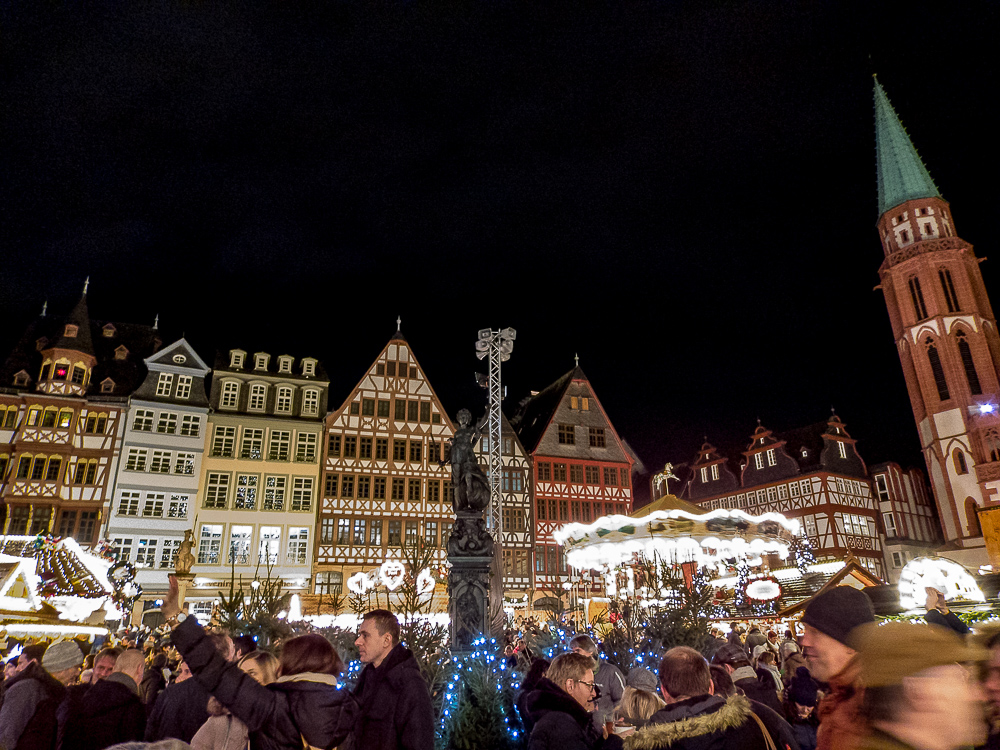
Frankfurt – As another very large city, Frankfurt has spread the market out through multiple squares. At least five different squares are intentionally designated by color scheme highlighting either the modern or the historic districts in which they are set. Our Sunday evening visit (and again on Monday midday) surprised us with the volume of people out and about on a “school night”. The town hall hosted an indoor artist market which was unique and appreciated both for warmth and content. Try to stay at least an hour so you won’t miss the church bells chiming on the hour.
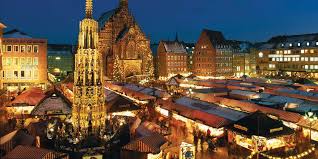
Nurnberg – folks think this is the biggest, granddaddy of all Christkindlemarkts, but it is neither. It is definitely big. Perhaps the reason it’s so appreciated is the entire market is all contained in one massive historic square and not spread out to far. It is lovely to see the Christmas Angel, a young woman chosen from a competition every year, arrive midday to both formally greet and then, informally walk around the market. And this is the region to purchase both the traditional wax angel tree toppers and the dried plum figurines so well known. In our humble opinion, the lebkuchen from Bavaria (meaning Nurnberg and Stuttgart from this list) are the best tasting.
What are you waiting for? GO!! (And check out our separate blog about what to eat and drink!)
By all means, contact us for tips and details if you’re planning a trip to the region. We’re always happy to share our travel knowledge. www.facebook.com/SueHendersonPhotography/


